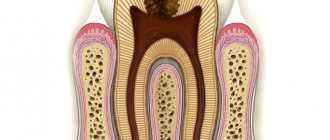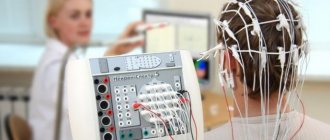Multiple sclerosis is an autoimmune disease of the central and peripheral nervous system, which is characterized by the disseminated formation of demyelinating pathological foci with the occurrence of symptoms in accordance with their localization. To this day, there are many questions regarding this pathology. What triggers an autoimmune process? What pathogenetic mechanisms underlie the disease? How to stop this process? Thanks to numerous scientific studies, it was possible to study many aspects of this pathology.
Previously, it was believed that multiple sclerosis mainly affects middle-aged people (30-50 years old). However, world statistics indicate an increase in the number of cases of demyelinating diseases among children. The proportion of multiple sclerosis in the age category from 0 to 16 years is about 1.2–6% of all patients.
The main pathogenetic link in the development of multiple sclerosis in children is a dysfunction of the immune system. As a result of exposure to trigger factors, a cascade of autoimmune reactions is launched. The synthesized T lymphocytes penetrate the blood-brain barrier and selectively destroy the myelin sheath of neurons and their axons. Fibrous plaques form in place of normal nerve tissue. The number of demyelinating foci and their size are determined by the activity of the pathological process.
In multiple sclerosis, not only the nerve cells of the central nervous system, but also the peripheral ones, succumb to autoimmune aggression. This statement was a real discovery in neurology. If just a few years ago disorders of the peripheral nervous system excluded the diagnosis of multiple sclerosis, today such variants of the course of the disease have been scientifically confirmed.
Causes of multiple sclerosis
The main pathogenetic mechanism of this disease is the sensitization of T-lymphocytes by myelin antigens and the activation of autoimmune reactions against their own nerve cells. It has not yet been possible to reliably establish the reasons for this process. There are several predisposing factors that can initiate a cascade of pathological immune response. These include:
- Infectious agents . According to this hypothesis, some viruses (adenoviruses, herpes viruses, mumps, measles) can trigger the synthesis of antimyelin antibodies. The genetic material of viruses is represented by a chain of nucleic acids. Some of its parts coincide with myelin proteins. Thus, antigen-presenting cells (APCs) perceive their own genetic material as foreign. After the exchange of information between APCs and T cells, an autoimmune reaction is launched against the myelin sheath of neurons and oligodendroglia, and inflammatory cytokines (interleukin-2, tumor necrosis factor, interferon gamma) are synthesized in the pathological focus, which lead to destructive processes.
- Heredity . According to statistics, the risk of multiple sclerosis in a child whose family has had a case of this disease is higher than in the general population.
- Environmental factors . The results of some studies confirm the fact that multiple sclerosis is more common in residents of geographical zones remote from the equator. This is explained by the low amount of vitamin D in representatives of the Caucasian race compared to residents of equatorial regions.
- Vaccination of children against hepatitis B and stress factors are not reliable reasons for the activation of autoimmune aggression.
Pathogenesis of MS
The pathogenetic mechanism of development of neurological pathology consists of several successive stages. Under the influence of a combination of triggers, autoimmune processes are launched that provoke the activity of T-lymphocytes (immune blood cells) and the synthesis of auto-aggressive antibodies to the myelin protein. Autoreactive T lymphocytes cross the blood-brain barrier (BBB) and penetrate nerve fibers. Next, there is an uncontrolled release of specific pro-inflammatory cytokines, which disrupts the exchange of information and coordination of actions between cells. Active inflammation develops, destroying the myelin sheaths. A sclerotic plaque forms. The process of progressive death of nerve cells—neurodegeneration—begins.
The compensatory mechanism of the myelin sheaths is poorly developed, so remyelination (recovery) does not keep up with the rate of demyelination.
Types of multiple sclerosis
This disease in children is classified according to the clinical course of the disease:
- Remitting-relapsing variant of the course . Episodes of increasing neurological deficit of the disease are followed by periods of partial or complete recovery. During an exacerbation, the neurological deficit increases gradually over several days to several weeks, exacerbation reaches a plateau phase, and then the impaired functions are gradually restored over several weeks or months. In some cases, the exacerbation reaches its maximum within a few minutes or hours. It should be noted that during this course of the disease, in some patients the symptoms that arise do not resolve completely, and the neurological deficit increases over the years.
- Primary progressive variant of the course . After the onset of the disease, gradual progression of the pathology is observed. There may be “bright gaps” in the clinical picture.
- Secondary progressive variant of the course . Against the background of alternating periods of remission and relapse, a secondary increase in the clinical manifestations of the disease is observed.
- Progressive course with periods of exacerbation . The increase in clinical signs of the disease begins with its first manifestations. The progressive course is accompanied by severe periods of exacerbation.
Course of MS
Characteristic variants of the clinical course of multiple sclerosis:
- Remitting. Exacerbations are replaced by latent periods with partial restoration of lost functions.
- Secondary progressive. An undulating course of chronic progressive destruction of nerve fibers, with increasing neurological deficit;
- Primary progressive. Progressive increase in demyelination and neurodegeneration, accompanied by an increase in the intensity of symptoms.
A benign course of MS is considered to be the patient’s ability to maintain functionality for at least 15 years from the onset of the disease. The malignant course is characterized by an accelerated change in the patient's condition, rapid disability and mortality.
Shpidonov Gennady Stanislavovich
Neurologist
Rostov State Medical University (neurology)
10 years of experience
Symptoms of Multiple Sclerosis
The clinical picture of this disease in children is very variable and depends on the location of the focus of demyelination and the course of the disease. Early signs of pathology are nonspecific and are often missed by parents. The main symptoms of multiple sclerosis in children include:
- A constant feeling of general fatigue , which does not depend on physical activity and daily routine. Children become inactive and stop playing with toys and other children.
- Visual impairment . Children often complain of the appearance of a “mesh before the eyes,” double vision, decreased visual acuity, and pain when moving the eyes. Sometimes visual fields are lost and color perception is impaired. Such episodes last more than a day with subsequent restoration of vision. With dystrophic changes in the optic nerve, irreversible damage occurs. When the oculomotor cranial nerves are damaged, strabismus and nystagmus occur.
- Local muscle cramps . They appear suddenly and disappear just as quickly.
- Hearing loss occurs when the auditory nerve or central auditory analyzer in the temporal lobes of the brain is damaged.
- Movement disorders such as central paralysis (increased muscle tone, decreased strength in the limbs, hyperreflexia, the appearance of pathological reflexes). Abdominal reflexes disappear in multiple sclerosis. Any type of paresis is possible: paraparesis, hemiparesis, monoparesis, tetraparesis. A characteristic feature of motor deficits in multiple sclerosis is variability. Weakness in the limbs waxes and wanes throughout the day.
- Cerebellar symptoms : impaired balance and coordination of movements, intention tremor, scanned speech, etc.
- Disorders of the sensitive area . The most common manifestation of this syndrome is a sensation of “crawling on the skin” or “tingling”. This symptom is called paresthesia. First of all, deep sensitivity suffers (muscular-articular, vibration, kinesthetic). A characteristic sign of sensory impairment in multiple sclerosis is the occurrence of paresthesia in the spinal region when the head is tilted forward.
- Dysfunction of the bladder and lower intestines are the most common reasons why parents of patients consult a doctor. Acute urinary retention or incontinence, neurogenic constipation or fecal incontinence significantly reduce the child's quality of life. These symptoms are associated with a loss of “central” control over the detrusor and sphincters.
- Cognitive and psychological disorders . Children's performance at school worsens, they become inattentive and irritable, and sometimes unemotional and depressed.
For multiple sclerosis, it is impossible to identify separate “classic” symptoms. Each sign of the disease correlates with the location of the degenerative process in the nervous system. Therefore, recognizing the disease in the early stages is very difficult. Especially in children, who are not always able to objectively assess their feelings.
Multiple sclerosis (MS) is a progressive autoimmune disease that affects the central and peripheral nervous system. The protective covering of nerve cells (myelin) is damaged, leading to decreased functionality of the brain and spinal cord. Any neurological symptom can be caused by multiple sclerosis . This is manifested by various neurological symptoms: loss of visual acuity, impaired coordination of movements, emotional instability, forgetfulness, insomnia.
Pathology specific relationship with age. The disease manifests itself at the age of 20, 40 or 50 with various symptoms that are also inherent in other diseases of the nervous system. Negative signs may disappear for several months or for a longer period, which allows patients to forget about the problem. In the most unfavorable cases (which is rare), the disease develops rapidly, the deterioration of well-being progresses over several weeks, and the negative changes are already irreversible.
Mechanism of action of the disease
Sclerotic changes are the process of replacing healthy tissue ( muscle, nervous and others) with connective tissue, as occurs with scarring. The formation of such a “patch” occurs in inflamed or injured areas. A good example is the formation of a rough scar after myocardial infarction.
Sclerotic lesions in multiple sclerosis , formed as a result of damage to myelin, look like compactions in the form of plaques, the size of which can reach several centimeters. Since, as the pathological process progresses, sclerotic compactions appear in different places of the central nervous system, the disease is called “disseminated,” that is, affecting the entire body.
Risk factors
The causes of the development of autoimmune disease have not been precisely established, but factors have been proven that increase the likelihood of the occurrence of pathology:
- young age (20–40 years);
- heredity (if close relatives have been diagnosed with the disease, the likelihood of getting sick increases);
- female gender (women get sick three times more often than men with MS with an undulating course);
- some viral agents can trigger the disease (Epstein-Barr virus, which causes mononucleosis);
- race (Europeans are in the highest risk group);
- vitamin D deficiency;
- smoking.
Residents of the northern regions get sick somewhat more often than those living in the south, although in sunny areas there has recently been an increase in the incidence of MS, as well as other immune pathologies.
Types of multiple sclerosis
The disease is characterized by the occurrence of persistent changes in parts of the brain and spinal cord, and an unpredictable frequency of alternating periods of remission and relapse.
Relapsing-remitting sclerosis is the most common form of the disease (the diagnosis is made in 8 out of 10 cases). The duration of the remission period ranges from one year to several decades, with the period of the first remission being the longest.
The secondary progressive form occurs in approximately 15% of patients several years after diagnosis. Symptoms become more pronounced with each period of exacerbation, and during remission, signs of the disease partially persist. The prognosis for the course of the disease is negative. The patient's health condition worsens with each relapse.
Primary progressive sclerosis is a rare and complex form of the disease, characterized by a gradual (or abrupt) increase in symptoms. There are practically no periods of sustained improvement in well-being (remission).
MS diagnosis is not a death sentence
Multiple sclerosis is a complex, difficult to treat disease, which currently cannot be completely eliminated. However, medical science has made significant strides in achieving stability in patients with this diagnosis. People work fully, relax and even participate in sports competitions.
Success in achieving remission depends on the stage at which the patient went to the doctor and how correctly the treatment regimen was drawn up. An individual approach is of great importance in consolidating positive results. The doctor takes into account the patient’s age, health status, time of diagnosis and the form of MS.
As already mentioned, primary recurrent disease is the most difficult to treat, but the use of modern therapy methods can improve well-being, prevent disability, and maintain a stable condition of the patient.
Symptoms of MS
The first signs appear more often at a young age, from 20 to 45 years. There can be from one to several symptoms, the frequency of their recurrence cannot be systematized. Loss of coordination, blurred vision, numbness of the limbs, and decreased intellectual function are the most common symptoms in men and women.
Optic nerve damage, an early sign of MS, results in double vision, color blindness, pain, and involuntary eye movements.
Fluctuations in body temperature (lowering and rising) also indicate the development of the disease, although short-term fever is often associated with a cold or viral diseases.
Sudden pain when tilting the head, reminiscent of an electric shock (Lhermitte's sign) is a reliable sign of MS if this phenomenon occurs frequently.
Muscle spasms and pain in the legs occur in different forms and stages of the disease. Sudden pain while walking causes the patient to limp, so the gait of people with MS often appears unnatural.
Impaired motor coordination is associated with pathological changes in the cerebellum. Depending on the nature of the disease, brain dysfunctions can be chronic or acute (occurring periodically). Practical experience proves that if the cerebellum is damaged in the initial stage of the disease, the prognosis for its course worsens.
Most patients experience involuntary twitching of the limbs and facial expression disturbances. Tremor is a consequence of unstable functioning of the cerebellum.
Loss of control over physiological processes occurs in 68% of patients (equally in men and women). Urinary and bowel incontinence, loss of sexual desire, impotence, and spastic pain in the pelvic area are caused by damage to the spinal nerves. With a spastic bladder, frequent and intermittent urination and incomplete emptying of the bladder are observed. Pathologies developing in the urinary system lead to a number of negative consequences:
- increasing weakness;
- frequent urinary tract infections;
- formation of kidney stones;
- decreased social activity;
- psychological discomfort.
Emotional disorders are expressed by tearfulness, prolonged depression, panic attacks, obsessive states, panic attacks, constant anxiety and restlessness. Frequent changes in mood, from laughter to crying, are due to a lack of myelin.
Mood instability is one of the prominent symptoms of multiple sclerosis. Psychological discomfort and mental suffering of the patient are the cause of family breakdown and career destruction. Medical care within the framework of an individual treatment program plays a significant role in improving the quality of life.
Diagnostics
It is difficult to diagnose the disease at an early stage, since the symptoms are common to many neurological pathologies. The most informative methods are:
- MRI scan with a contrast agent (the images clearly show active and inactive lesions of the brain);
- examination of the cerebrospinal fluid (puncture) to detect antibodies and areas of inflammation (the method allows for clear differentiation with neurological diseases that have similar symptoms);
- measurement of electrical activity of nerve fibers (method of recording evoked potentials);
- ophthalmological examination (the nature of damage to the organs of vision is determined).
Comprehensive studies will make it possible to make a reliable and accurate diagnosis, determine the nature and stage of multiple sclerosis, with MRI being the main diagnostic method.
Treatment of MS in young people
Treatment of multiple sclerosis includes three areas:
- relief of exacerbations;
- slowing down the development of the disease;
- elimination of negative symptoms.
Therapeutic procedures used in modern neurological practice are diverse and varied, which makes it possible to achieve stable remission (including when diagnosing complex forms of the disease).
In the early stages, therapy is aimed at preventing disability. It is necessary to slow down the destruction of the nervous system and develop a positive attitude in the patient. Belief in the success of treatment plays a huge role in the onset of stabilization and significantly increases the effectiveness of medical procedures.
If disability has occurred (the patient cannot move independently), medications and procedures are prescribed to improve the quality of life, relieve pain, relieve nervous tension, and eliminate depression.
First-line drugs (FLT) are beta interferons. The effectiveness of the course of treatment after taking medications is assessed every three months.
The second group of drugs are monoclonal antibodies that prevent the penetration of immune cells into the structures of the central nervous system.
Symptomatic drugs are prescribed based on the manifesting signs of the disease. This line includes antidepressants, vitamin complexes, and drugs that stimulate metabolic processes.
Physiotherapeutic procedures for multiple sclerosis are used in cases where patients cannot move independently. Physiotherapy allows you to maintain preserved motor functions and reduce the intensity of pain in the pelvic area.
It is important to use aids for independent movement to avoid congestion in the tissues and complete muscle atrophy. Practical experience proves that correctly chosen physiotherapeutic procedures significantly improve the patient’s overall well-being and partially relieve internal tension caused by anxiety and fear.
What should a patient know about multiple sclerosis?
The patient must understand that it is not yet possible to cure MS, but it is possible to live fully with this pathology. The life expectancy of healthy people and those diagnosed with MS does not differ significantly, except in rare cases of severe disease. It is important to follow all doctor’s instructions and under no circumstances exclude yourself from an active social environment. The human brain actively works when mastering new skills, gaining knowledge, training memory, and developing intellectual functions.
Physical education plays an equally important role in the onset of remission. Physical exercise should become the norm of life - as necessary as hygiene procedures. Exercise therapy, like physiotherapeutic procedures, is prescribed by a doctor as part of a personal treatment developed taking into account age, nature and type of disease.
Constant medical monitoring allows one to draw conclusions about the effectiveness of the applied therapy methods and make adjustments as treatment progresses. It is difficult for doctors to predict the nature of the development of pathology; each patient’s disease progresses differently. Sometimes the process slows down for many years, while medicine is constantly developing, which means that patients have a chance to get even more effective drugs or undergo treatment using new methods.
If you have neurological symptoms, sign up for an examination at the PROFMEDCENTER clinic in Voronezh by calling +7 (473) 202–1–200. The earlier the disease is detected, the higher the chances of successful treatment .
Diagnosis of multiple sclerosis
Diagnosis of the disease involves visualization of foci of demyelination of the central nervous system using instrumental research methods (MRI with the introduction of intravenous contrast), confirmation of the autoimmune activity of the body after specific immunological tests and determination of functional disorders. MRI is considered the “gold standard” in diagnosing multiple sclerosis. This method allows you to identify the slightest foci of demyelination. MRI with contrast gives a clear picture of the pathology, in which the “old” and “new” foci of demyelination differ from each other. Based on these data, one can judge the activity of the disease.
Immunological tests are carried out to assess the activity of the pathological process. The biological material for these tests is mainly cerebrospinal fluid or blood. Detection of lymphocytic pleocytosis and increased myelin levels are nonspecific signs of multiple sclerosis.
An extended blood immunogram allows you to identify those disorders of the immune system that have become critical in the development of demyelinating disease of the nervous system.
The evoked potential method is becoming increasingly important in the diagnosis of multiple sclerosis. It allows you to detect demyelination of neurons at the initial stage of the disease. After analyzing the nature of the passage of the electrical impulse from the peripheral receptor to the central analyzer, the degree of damage to the components of this circuit is determined.
To verify the diagnosis of multiple sclerosis, W. McDonald’s diagnostic criteria are used all over the world. They compare the number of symptomatic episodes (attacks) and the conclusion of magnetic resonance imaging (MRI).
All results of additional research methods must correspond to the clinical picture of the disease. Multiple sclerosis is characterized by transient episodes of nervous system dysfunction that last at least 24 hours. Symptomatic attacks should appear no more than once a month.
Treatment methods for multiple sclerosis
Treatment of children with this disease is medicinal. There are two directions of therapy: pathogenetic and symptomatic.
The goal of pathogenetic treatment is to correct the dysfunction of the immune system and reduce the activity of autoantibodies against one’s own cells of the nervous system. For this purpose, anti-inflammatory drugs, immunosuppressants, and immunomodulators are used.
To reduce the severity of symptoms of multiple sclerosis, muscle relaxants, anticonvulsants, amino acids, B vitamins, antidepressants, neuroprotectors, psychostimulants and nootropics are used.
Physiotherapy is prescribed in the remission stage. The goal of non-drug treatment is to prevent complications of multiple sclerosis. Plasmapheresis, massage, and physical exercises are used for this.
Psychotherapy is an important component of the treatment process. This direction ensures the child’s social adaptation and prevents the development of depression and cognitive disorders.
Consequences of multiple sclerosis
The progression of multiple sclerosis can provoke a number of complications from other organs and systems. The most common consequences include:
- Infectious diseases. Due to dysfunction of the pelvic organs, children often experience infections of the urinary tract (cystitis, urethritis) and kidneys (pyelonephritis, chronic kidney disease). Multiple sclerosis often leads to breathing problems. Deterioration of pulmonary ventilation can provoke the occurrence of aspiration pneumonia.
- Movement disorders up to the development of plegia.
- Decreased vision, blindness.
- Hearing impairment, deafness.
- Depression and other mental disorders.
- Disability.











